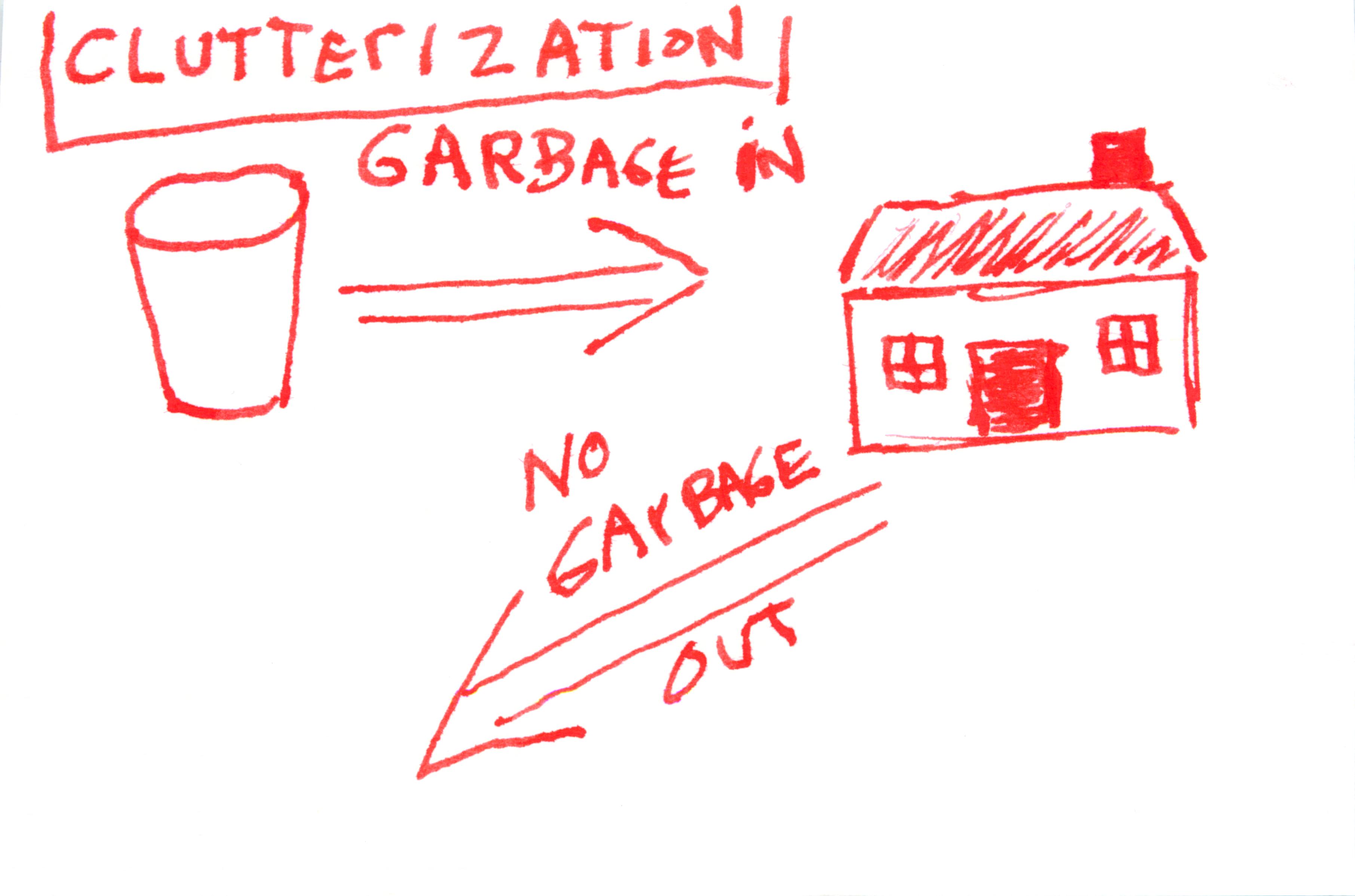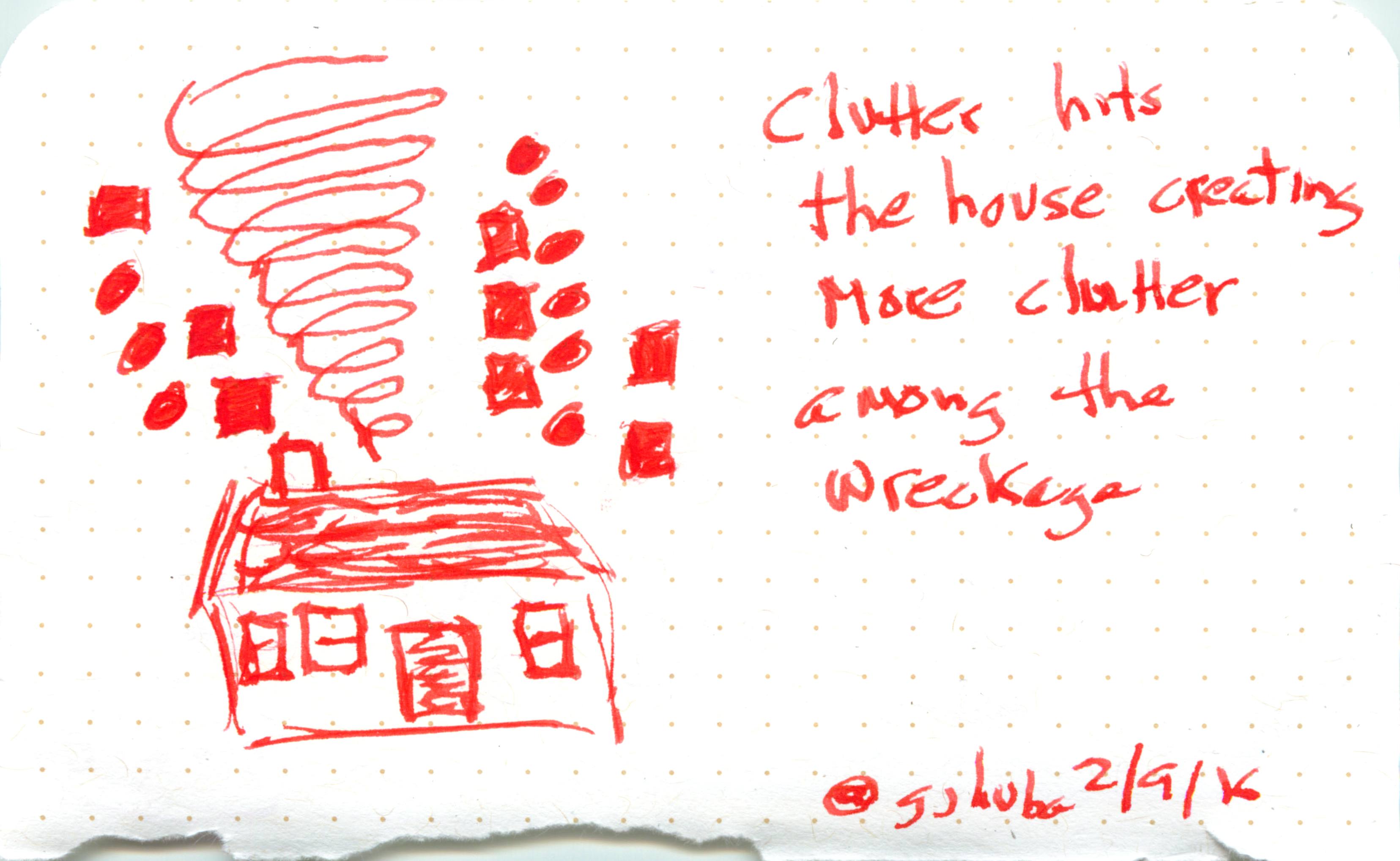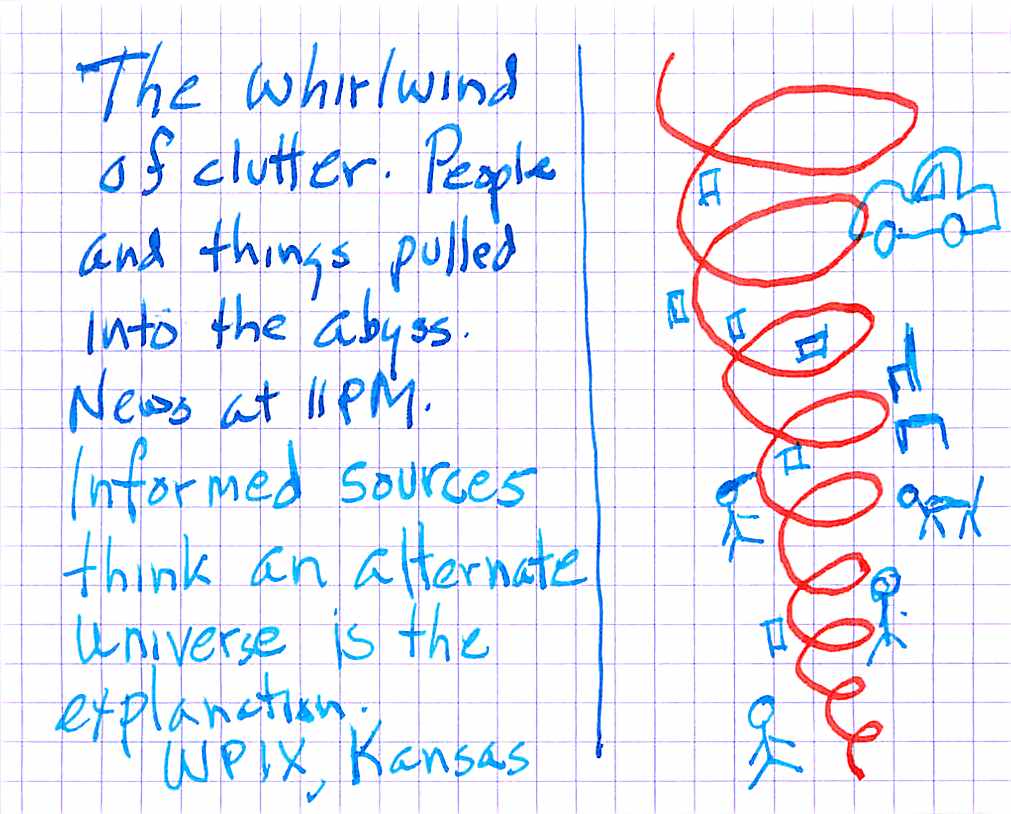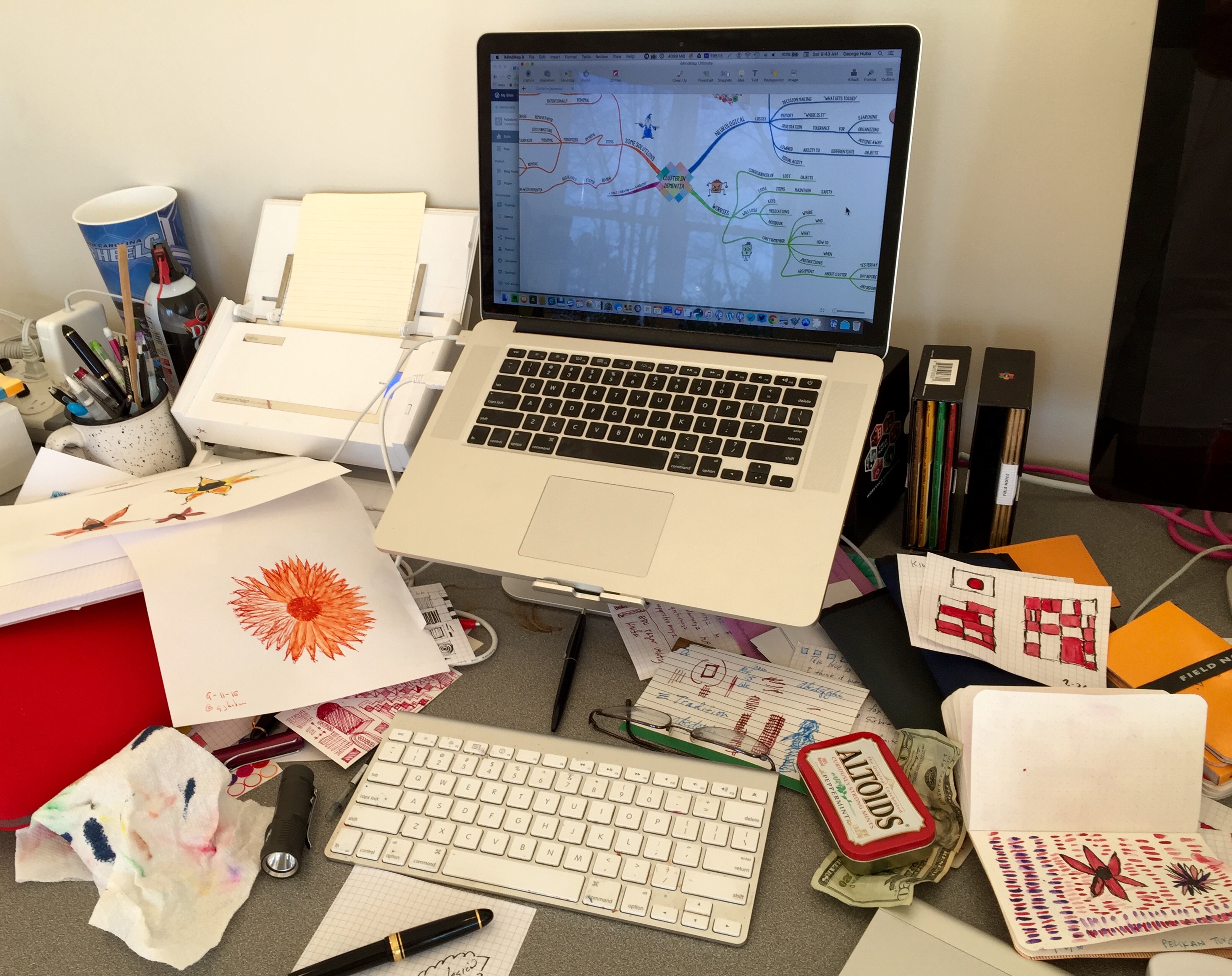I hate clutter. I’ve always had far too much stuff around, usually shoved in an unused closet, the garage, storage. Old questionnaires, old clothes, old pens most run dry by now, old external data drives (in case I need an email from 1990), old office supplies, old books from grad school in the 1970s that no current grad student wants for free (no grad students buy boring professional journals in paper formats anymore), boxes of new file folders (which no one uses in the computer ages), old jeans (as sizes went up and sometimes down over the years), t-shirts from the 1980s, and who knows what else. I also inherited a bunch of family heirlooms (mostly junk but including my treasured Eagle Scout badge and transcript from grad school) in boxes from my mother. The organization systems I have tried to implement since the early 1970s have never really worked that well.
And the reason “disorganized and cluttered” could be dealt with easily was that I had a very organized mind and my memory was like a steel trap; if I had observed or read or heard it, the information was there. And, damn it, I never learned to clean up after myself because there were always more exciting and new things to do. And if I needed something the odds were extremely high I could find it the random box where it had been placed.
And this was before the Internet, before the Internet with Google, before the Internet with voice-controlled Google. Information organization needs have exploded.
And this was before I had a neurodegenerative disease with memory loss, significantly lowered ability to multi-task and make decisions, a big temper when frustrated, lowered ability to separate perceptual field from ground (or the object I wanted in the clutter), and many other dementia symptoms.
Now clutter just destroys me. I waste time every day trying to find things, organize things, decide what to throw out and what to keep, and putting things where I can find them. I get extremely anxious and agitated in clutter but cannot figure what to discard without then facing a world-shattering event without the one paper or piece of clothing or knife or key or medical records that would save the world.
I and many other people with dementia (especially those living at least partially independently) often use the strategy of laying things down on all available surfaces so that they can hopefully be found again. Strategy after strategy for putting my keys and cell phone down in the same place have failed me, file organization schemes on the computer and floor are fairly convoluted, I keep my shirts and pants on the floor or on chairs in folded stacks so I can see my options for getting dressed, and many other strategies I need to find things just cause more clutter. The whole mess becomes a downward spiral requiring more and more energy to even keep even with the impending invasion of the mind snatchers.
It’s all like a whirlwind or tornado sucking everything up and randomly tossing it all about.
And then neither Dorothy nor Jack nor Jill nor Charlie Brown nor Lucy nor Linus nor Snoopy nor Toto nor I are in Kansas. Nor are our belongings. Some theorize that the “stuff” all goes into an alternate universe; I sort of subscribe to that explanation.
The following mind map shows some of the reasons a person with dementia may create anxiety-arousing environments for themselves as a consequence of mental changes that occur in dementia, why they may not be able to effectively fix the problems of clutter, and some suggestions about how to help.
Click the image to expand it.
The following presentation shows portions of the mind map above. You can either let this run automatically or pause it and move forward and back with the arrow keys.
The key is that the environment must permit the person with dementia to do their favorite activities (sit at a computer, relax before a television, draw or paint, play music, entertain a small number of friends, etc.) while having a dedicated area (a small closet with a door into which a bureau or a file cabinet can be put is probably ideal). Surfaces in the main living areas where things can be put down need to be intentionally and regularly minimized. The “junk” closet needs to have some big drawers where stuff can just be thrown and kept out of sight and bigger things can be stacked. Ideally, the clutter closet should be close to the main living areas so that it is not too difficult to throw things into. Of course, the best thing is to not need to toss stuff into a bureau in the closet. But, it is what it is. And somebody needs to regularly help the person with dementia triage stuff and discard stuff that can go.
The environment must represent the person with dementia’s needs. Less stressing and anxiety producing living spaces can be creatively designed at low or no cost. Getting rid of extra furniture and especially table tops and chairs that could hold junk is very desirable. Furniture that needs to be cleaned regularly is also something to avoid.
Keep it uncluttered, open, and very bright. Don’t get scratched by the Clutter Cats.

Now if I could just take some of my own suggestions. Or a small business could appear that could set up an environment for me in a morning for not too much money. Or a social work program would like to send students or interns over to my house for a half day to talk to an engaging guy with dementia and help him figure out the best way to deal with clutter and maintain a clean and healthy environment at minimal cost and with little involvement from caregivers. Heck, if the student has to write a paper about dementia and the experience I could even help outline what was learned and then draw a mind map.
Happiness is a clean, uncluttered room with bare surfaces and a bunch of flowers in a vase on a table and lots of light both during the day and at night. Many people with dementia cannot create or maintain such a living space without help. With help, a lot of other problems might be minimized, so this is a pretty good place to start with a simple behavioral intervention.
I like having all of my doodles around so that I can go back and look at them. I solve that clutter problem by scanning all of the 100s of pieces of paper each week onto my computer.
Now if somebody could just tell me where that directory is on my computer …










Drawings are fabulous George! They go so well with the narrative.
Thanks Jackie. With neurodegenerative disease sketches and mind maps work a lot better for me than words and I am glad you can follow the images. George